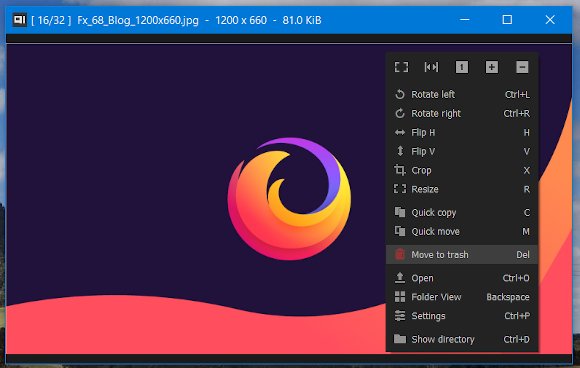

- #Nomacs add text mac os x
- #Nomacs add text install
- #Nomacs add text software
- #Nomacs add text code
- #Nomacs add text zip
#Nomacs add text software
#Nomacs add text install
I made simple commands to install these software all at once: However, I like to install Blender and Krita separately, because I’m very strict that I’m using their very latest versions. Install them either individually or all of them at once (not guaranteed to work for you, use caution). Installing some of my favorite tools all at once:įor installing many of my favorite tools I like to use PPAs or for some others I just use what’s available in the distro’s software sources.
#Nomacs add text mac os x
I also started to write a small article about a list of a couple of useful free applications for Windows, Mac OS X and Linux. FlatpaksĪlso something called Flatpak is under development. Either the Snap Blender is broken or I need to investigate more how this works later. You can find and install software that are supported by Snap from UAppexplorer or with command: # Find Blender or Krita Snap: snap find blender # Result: blender-tpaw 2.78-tpaw0 snap find krita # Result: krita 3.0.1.1-snap16 # Install Blender or Krita Snap: sudo snap install blender-tpaw sudo snap install krita # Launch it: blender-tpaw krita # However blender-tpaw didn't have CUDA available even though I had it enabled in all the other Blenders I had installed or downloaded from Blender's website. Snap lets you install the latest software no matter what Linux distribution you are using. In addition to Appimages, also technology called Snap is under development. Image by David Revoy, licensed as CC-BY Snaps Here’s a small article about the Appimages by David Revoy.įor myself, though, I still like to install the latest Krita through the Krita PPA - but I’m sure I’ll start using Appimages once they become more popular. For example Krita uses that already today for distributing their Linux version of the software. In the future there are going be a nice alternative for getting software into Linux operating systems, no matter what distro you’re using. So far, though, I haven’t had any problems with using them.


It’s a good idea to use a little bit of caution with these, because probably not every PPA is what they promise to be. Some other distros might have their own, like Arch-based distro users can use their AUR or Arch User Repository). Other benefit is also that it’s easy to install most of your favorite tools all at once to a freshly installed distro, as long as it’s a PPA compatible one (usually only Ubuntu-based ones support PPA. So, you will have pretty much the very latest versions of the software available to you automatically (unless the PPA stops being maintained). The software installed via PPA will automatically get updated alongside those regular operating system updates you do once in a while. It’s recommendable to favor the PPAs recommended by the developers of that software. Anyone can create and keep maintaining a PPA service in Launchpad (where most of the PPAs are found). Some are official, some are just hobby versions.
#Nomacs add text code
PPAs are Personal Package Archives, that basically are usually up-to-date software built from the software’s source code by regular people. Also, it would take quite some time to download them from their websites by hand separately. Most often an Ubuntu-based distribution’s default software manager has very outdated versions of the software I want to use. In order to benefit of PPA’s, you need a Ubuntu-based Linux distribution. With this feature you can easily compare images by zooming and/or panning at the exactly same position or even by overlaying them with different opacities.Installing my favorite tools from the PPAs A unique feature of nomacs is the synchronization of multiple instances. It has a pseudo color function which allows creating false color images. "nomacs includes image manipulation methods for adjusting brightness, contrast, saturation, hue, gamma, exposure. Activating the cacher allows for instantly switching between images." Within a directory you can apply a file filter, so that only images are displayed whose filenames have a certain string or match a regular expression. A thumbnail preview of the current folder is included as well as a file explorer panel which allows switching between folders. Metadata stored with the image can be displayed and you can add notes to images.
#Nomacs add text zip
It is able to browse images in zip or MS Office files which can be extracted to a directory. "nomacs features semi-transparent widgets that display additional information such as thumbnails, metadata or histogram.


 0 kommentar(er)
0 kommentar(er)
